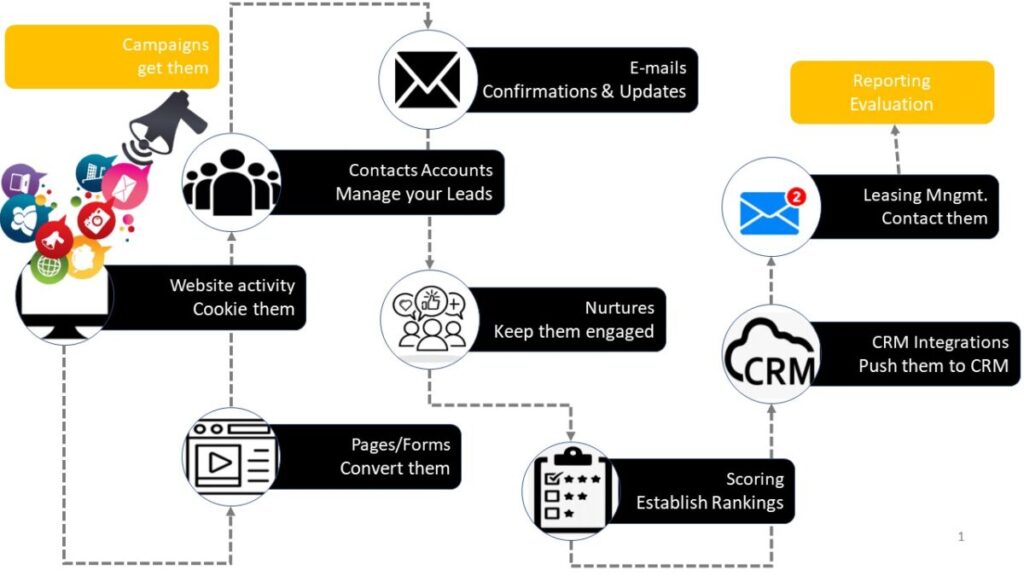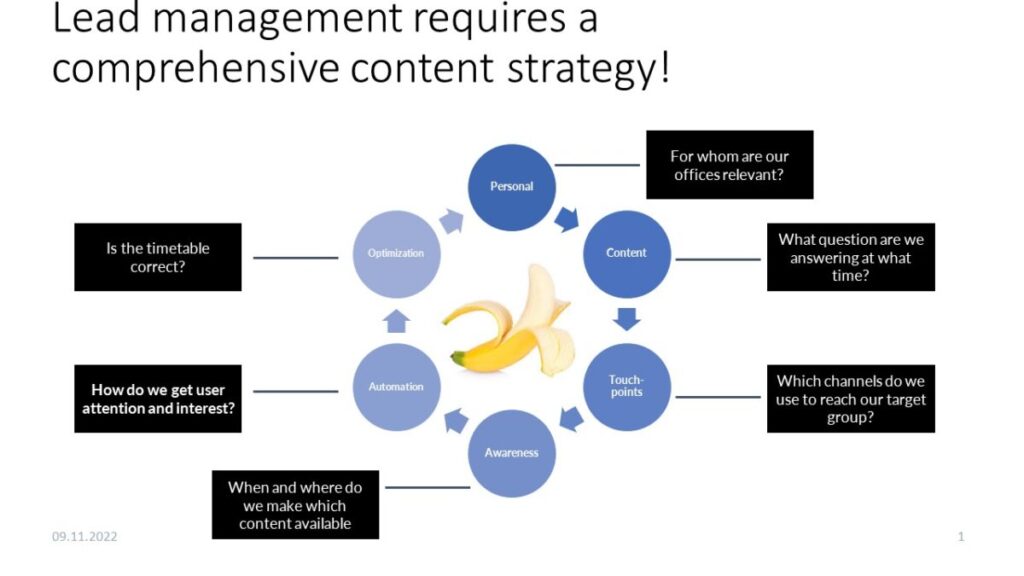Real estate marketing as we know it today: Marketing, in most asset classes, is characterized by tradition. In the residential and office asset classes, nice brochures and a small landing page are created for each new development project, PR messages are posted on the relevant real estate sites, and the hope is that interested parties will come forward.
In the retail asset class, space is used with some regularity for smaller promotions or events and driven by retail highlights – spring/autumn campaigns, Black Friday, Christmas and seasonal sales promotions throughout the calendar year. It is out-of-home driven, specifically in terms of media mix, and is sometimes flanked by radio spots. The world keeps turning, but marketing strategies have been the same for decades.
That is how many people would describe the daily marketing activities of a real estate company. However, at the end of the day, unadulterated KPIs count – even in real estate marketing. What counts is the occupancy rate and the number of units sold or leased, the footfall achieved at shopping centers, the sales generated from that, and, subsequently, the sales-based rental income. However, between the marketing traditions described above and the hard KPIs, there is still plenty of room for innovation potential in the industry. In the digital sector, for example, the industry thinks in terms of website presence, banner ads, and perhaps a very small percentage thinks in terms of social media, such as Facebook and Instagram. The marketing world today, however, has much more to offer when it comes to efficiently achieving hard KPIs. Take marketing automation as an example.
Software-based automation of sales and marketing processes is nothing new in and of itself. Back in the 2000s, people in the U.S. started automating sales with additional information about potential customers. Marketing automation has now become established in many industries, such as large software vendors and tech companies, and it has begun to gain a foothold in many other industries as well. Linking marketing automation with display advertising, newsletters, social media, and a landing page where you can buy products without worry has long been standard in many industries. Behind every product ad you encounter on Instagram today are corresponding considerations and tools. Nevertheless, let us start from the beginning.
What is Marketing Automation, and How Does It Work?
As already mentioned, it is a system-based tool for process optimization in customer acquisition. The goal of marketing automation from a marketing perspective is to get the user’s attention and the associated personal data via tailored content on selected channels. In office leasing, that means picking up an office prospect that is either at the beginning (pre-awareness) of the office search process or already at an advanced stage (awareness/interest). At the end of the customer journey, the leasing manager (sales) is contacted for an office inquiry and/or viewing. That is referred to as lead generation. It involves the transition from an anonymous user to a qualified lead, in other words, information about the person and his or her interests, such as industry, position, and search relevance are desired. However, even trivial things like phone numbers and addresses can be relevant when it comes to lead qualification.

In order to get personal data from a user, as a company, I need to deliver relevant content and have a well-thought-out content strategy. This is the real function of marketing. It sounds simple, but it is not. In these times of growing cybercrime threats, data leaks, and digital omnipresence, the average user is already sensitive to anything that requires more than a name and email address. According to a recent survey by U.S. market research firm Forrester Research, 1/3 of consumers turn away from companies after just one bad experience, meaning irrelevant content is perceived as spam and harassment.
Lead management requires a comprehensive content strategy. Using our office example, as a marketing automation user, I need to consider which of my offices might be of interest to which target audiences. The location of the office may correlate with the industry of the office prospect, or the size of the office may play a critical role. Which channels are used for which target groups? When and where do I provide which content, etc.? The art is not the creation of the content, but its relevance within the defined target groups.

If I run a shopping center, my target audience is likely to be very interested in the latest fashion trends, the latest store openings at my center, and live activities. If I plan a children’s program every Saturday morning, my relevant target audience will probably be parents with children between 3 and 10 years old, narrowed down to my catchment area. In such a case, it is advisable to create content that will make parents want to attend. In return, their information on interests, behavior, etc. gives me a profile that I can subsequently address with marketing activities accordingly.
Increased and optimized content activities also increase volume in the sales funnel. The result is nurtured leads along the funnel in personalized marketing communications. Sales teams receive qualified leads – so-called interested customers. They include those looking to buy or rent an apartment, young people chasing the latest fashions and flocking to shopping malls, and decision-makers looking for new offices.
At the end of the day, those who are willing to engage in customer-centric marketing along the customer journey not only gain detailed information about their clientele, but also more insight into their needs. They reduce the scattered loss of their marketing activities and increase the resonance in their target groups. The advantage of marketing automation in the real estate industry is obvious: Even properties of different asset classes sometimes have specializations, co-working spaces for start-ups, luxurious apartments in prime locations for the upper-middle class, and shopping centers with hip stores. Whatever the need, marketing automation allows companies to offer tailored marketing even before initial contact is made, and to use relevant content to turn acquired leads into the office tenants of tomorrow.

Bernhard Klein, Chief Marketing Executive, Head of Group Brands at IMMOFINANZ
Bernhard Klein has worked in destination marketing for more than 20 years and is considered an international authority on brand building, brand positioning, and marketing. Clients and companies from a wide range of industries have benefited from his experience and work. As Head of Marketing for Austria’s largest listed real estate group, IMMOFINANZ AG, Bernhard Klein has successfully developed shopping center and office brands in Eastern and Southeastern Europe for many years. Prior to that, Bernhard Klein managed the tourism marketing of the City of Vienna in more than 23 countries, for which he was honored with numerous prizes and awards. Klein studied marketing in Vienna and completed his Executive MBA in General Management at the University of St. Gallen/CH. He is a member of the jury for the City Nation Place Award in London, a lecturer at universities and congresses, a court-certified expert in marketing and media, and an Austrian associate at Brandmeyer Markenberatung in Hamburg.






